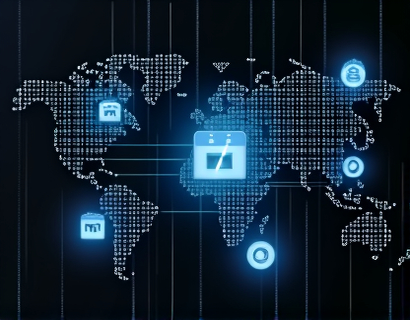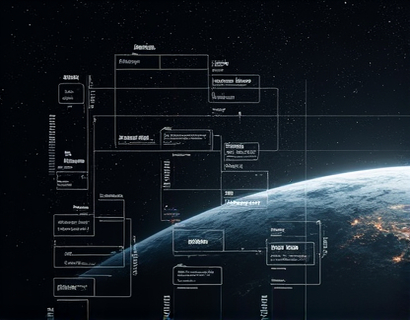Agricultural Software: Revolutionizing Farming Efficiency with Tailored Tech Solutions
In the rapidly evolving landscape of agriculture, the integration of advanced software solutions has emerged as a pivotal factor in enhancing farming efficiency and productivity. These technological advancements are not merely tools but transformative forces that are redefining the way agricultural operations are managed. By leveraging sophisticated software, farming professionals and industry experts can streamline processes, optimize resource utilization, and make informed strategic decisions, ultimately leading to significant growth and competitiveness in the market.
The Role of Agricultural Software in Modern Farming
Agricultural software encompasses a broad range of applications designed to address specific challenges faced by farmers and agricultural businesses. These solutions are tailored to meet the unique needs of the farming sector, from precision agriculture and crop management to supply chain optimization and financial planning. The primary goal of these software solutions is to provide actionable insights and automate repetitive tasks, allowing farmers to focus on core activities that drive productivity and profitability.
Precision Agriculture: Enhancing Crop Yields and Resource Efficiency
Precision agriculture, also known as precision farming, is a key area where software plays a crucial role. This approach utilizes data from various sources, including satellite imagery, drones, and soil sensors, to monitor and manage crops with unprecedented accuracy. Software solutions analyze this data to provide detailed insights into soil conditions, moisture levels, and plant health, enabling farmers to make precise adjustments to their farming practices. For instance, variable rate technology (VRT) allows for the precise application of fertilizers and pesticides based on real-time data, reducing waste and environmental impact while maximizing crop yields.
One of the most significant benefits of precision agriculture is its ability to optimize resource usage. By identifying areas within a field that require more or less attention, farmers can reduce the consumption of water, fertilizers, and other inputs. This not only lowers operational costs but also contributes to sustainable farming practices. Software platforms like FarmLogs and Granular offer comprehensive tools for managing these processes, providing farmers with a clear view of their operations and helping them make data-driven decisions.
Crop Management and Monitoring
Effective crop management is essential for ensuring high yields and maintaining the health of agricultural lands. Software solutions designed for crop management provide farmers with real-time monitoring capabilities, allowing them to track the growth and health of their crops throughout the growing season. These platforms often include features such as planting and harvesting calendars, weather forecasts, and pest management tools, all integrated into a user-friendly interface.
For example, the use of mobile applications enables farmers to access critical information on-the-go, facilitating timely interventions. Apps like Cropio and FieldLogix offer detailed analytics and reporting, helping farmers identify trends and patterns that can inform future planting and management strategies. By leveraging these tools, farmers can proactively address issues such as disease outbreaks and nutrient deficiencies, ensuring optimal crop performance.
Supply Chain Optimization
Beyond the farm, agricultural software plays a vital role in optimizing the supply chain. From procurement and inventory management to logistics and distribution, these solutions streamline operations, reduce costs, and improve efficiency. By integrating various stages of the supply chain, software platforms provide a holistic view of the entire process, enabling businesses to identify bottlenecks and areas for improvement.
One notable example is the use of blockchain technology in supply chain management. Blockchain ensures transparency and traceability, allowing all stakeholders to track the movement of goods from farm to table. Platforms like IBM Food Trust utilize blockchain to create an immutable record of transactions, enhancing trust and reducing the risk of fraud. Additionally, software solutions like JibberJobber help farmers and distributors manage orders, inventory, and deliveries with ease, ensuring that products reach consumers fresh and on time.
Financial Management and Decision-Making
Financial management is a critical aspect of running a successful agricultural business. Software solutions designed for financial planning and analysis provide farmers and agricultural businesses with the tools they need to manage their finances effectively. These platforms offer features such as budgeting, cash flow management, and financial reporting, all of which are essential for making informed decisions and ensuring long-term sustainability.
Tools like QuickBooks and FarmWorks integrate seamlessly with other agricultural software, providing a comprehensive view of financial health. These solutions help farmers track expenses, manage payments, and forecast revenue, enabling them to allocate resources more efficiently. By having access to real-time financial data, farmers can make strategic decisions that align with their business goals and market conditions.
Data Management and Analytics
Data is the backbone of modern agriculture, and effective data management is crucial for leveraging its full potential. Agricultural software solutions are designed to collect, store, and analyze vast amounts of data, transforming it into actionable insights. Advanced analytics tools enable farmers and industry professionals to identify trends, predict outcomes, and optimize operations based on empirical evidence.
For instance, machine learning algorithms can be used to predict crop yields, optimize irrigation schedules, and detect early signs of crop stress. Platforms like Climate FieldView and John Deere Operations Center offer sophisticated data analytics capabilities, providing users with deep insights into their farming operations. By harnessing the power of data, agricultural professionals can make more informed decisions, reduce risks, and enhance overall productivity.
Challenges and Considerations
While the benefits of agricultural software are undeniable, there are several challenges and considerations that must be addressed. One of the primary concerns is the digital divide, where smaller farms and those in remote areas may lack the necessary infrastructure and technical expertise to fully adopt these technologies. To bridge this gap, it is essential to provide training and support, ensuring that all farmers can benefit from the advancements in agricultural software.
Another challenge is the integration of different systems and platforms. Agricultural operations often involve multiple stakeholders and processes, and ensuring seamless integration between various software solutions can be complex. Standardization and interoperability are key factors in overcoming this challenge, allowing for a more cohesive and efficient farming ecosystem.
Future Trends and Innovations
The future of agricultural software is promising, with ongoing innovations set to further revolutionize the industry. One area of focus is the integration of artificial intelligence (AI) and machine learning, which can enhance predictive analytics and automate more complex tasks. AI-powered drones and robots are already being used for tasks such as planting, monitoring, and harvesting, reducing the need for manual labor and increasing efficiency.
Additionally, the Internet of Things (IoT) is playing an increasingly significant role in agricultural software. IoT devices, such as smart sensors and connected equipment, provide real-time data on various aspects of farming, from soil moisture to machinery performance. This continuous flow of data enables more precise and responsive management, further optimizing operations.
Conclusion
The integration of advanced software solutions in agriculture is transforming the industry, offering unprecedented opportunities for efficiency, productivity, and sustainability. By embracing these technological advancements, farming professionals and industry experts can streamline their operations, make data-driven decisions, and stay competitive in a rapidly changing market. As the agricultural sector continues to evolve, the role of software will only become more critical, paving the way for a more resilient and prosperous future for all involved.










































